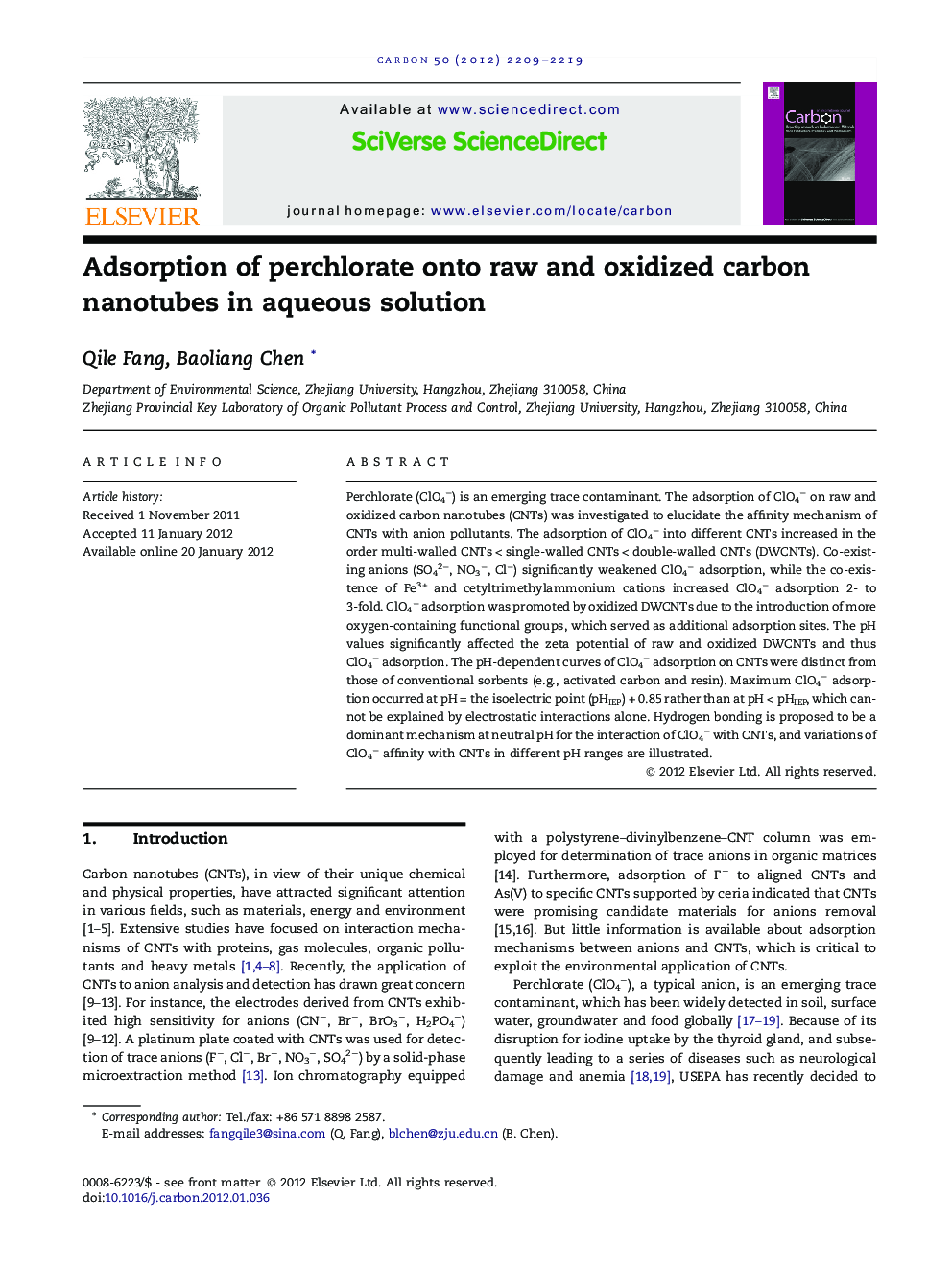| کد مقاله | کد نشریه | سال انتشار | مقاله انگلیسی | نسخه تمام متن |
|---|---|---|---|---|
| 1415178 | 985926 | 2012 | 11 صفحه PDF | دانلود رایگان |

Perchlorate (ClO4−) is an emerging trace contaminant. The adsorption of ClO4− on raw and oxidized carbon nanotubes (CNTs) was investigated to elucidate the affinity mechanism of CNTs with anion pollutants. The adsorption of ClO4− into different CNTs increased in the order multi-walled CNTs < single-walled CNTs < double-walled CNTs (DWCNTs). Co-existing anions (SO42−, NO3−, Cl−) significantly weakened ClO4− adsorption, while the co-existence of Fe3+ and cetyltrimethylammonium cations increased ClO4− adsorption 2- to 3-fold. ClO4− adsorption was promoted by oxidized DWCNTs due to the introduction of more oxygen-containing functional groups, which served as additional adsorption sites. The pH values significantly affected the zeta potential of raw and oxidized DWCNTs and thus ClO4− adsorption. The pH-dependent curves of ClO4− adsorption on CNTs were distinct from those of conventional sorbents (e.g., activated carbon and resin). Maximum ClO4− adsorption occurred at pH = the isoelectric point (pHIEP) + 0.85 rather than at pH < pHIEP, which cannot be explained by electrostatic interactions alone. Hydrogen bonding is proposed to be a dominant mechanism at neutral pH for the interaction of ClO4− with CNTs, and variations of ClO4− affinity with CNTs in different pH ranges are illustrated.
Journal: Carbon - Volume 50, Issue 6, May 2012, Pages 2209–2219